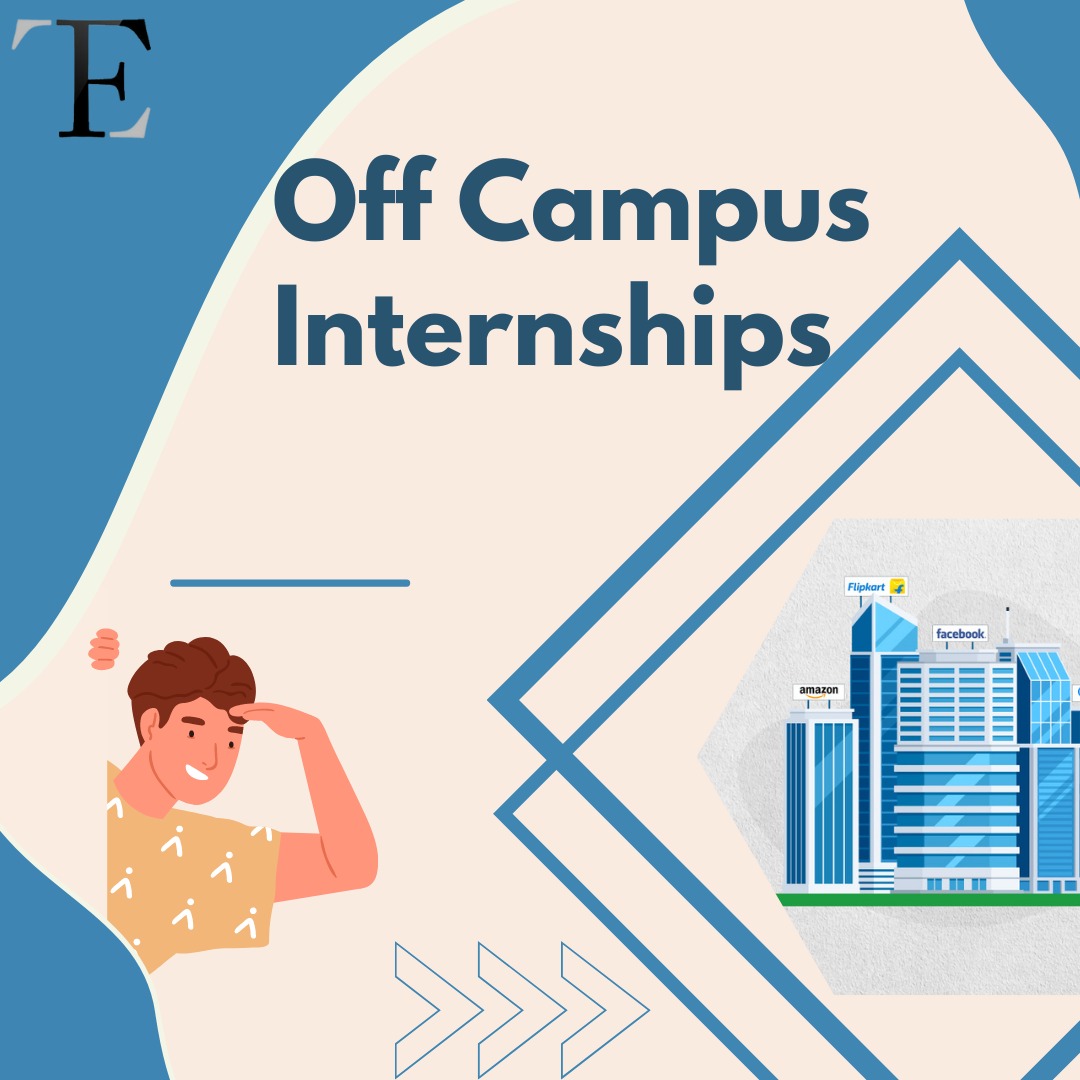Edited by Ridha Shemil
Design by Harshavardhan Bhosale
The clock is ticking faster.
Emails fill up the inbox in hours.
Resume guidelines, preparation tips, pre-placement talks, tests, interview rounds, and finally – that precious offer.
My, what a rush.
With the internship season approaching, a breeze of tasks and an impenetrable sphere of competition accompany what is perhaps a crucial phase for any student of IIT Madras.
Getting an internship is indeed a challenge – but when you think about it, this phase is just one among many situations that push students to rethink what to deliver, how to internalize, where to rework and which channel to pursue.
A recent T5E issue carefully mapped out the pros and cons of a research internship and an industrial internship – which provided a clear platform for the readers to decide on what route they’d like to take. Traversing further from the publication, the next potential question would be – what would be the scenario when we go beyond the campus? Why would anyone go outside the establishment for an internship? What would be the various sources to begin the “great lookout”? With many questions and very few answers – it is vital to delve into the roots of our core topic of discussion.
To begin with, why would one go for off-campus internships? Well – this is a highly subjective question. A candidate may find greater scope for internships beyond the institute’s current offerings. Lack of options for a particular department, desiring a work profile that is not available within the arriving roles, and the dream to work for a company that does not come to IIT Madras are some of the most popular reasons. Furthermore, in specific scenarios, keeping an off-campus internship as a backup option has been seen as a way to approach the institute internship drive. However, this does not come without exceptions. One of our interviewees bagged a research internship but had to look for an off-campus one due to the pandemic being a roadblock, and the internship not satisfying credit requirements.
Now, these reasons breed a trail of advantages and disadvantages. A student going for an off-campus internship has the chance to target a plethora of companies without significant rules. Off-campus internships help break through the disadvantages of limited or unavailable job profiles within the Institute Internship Drive.
“I feel that there are not a lot of Data Science / Machine Learning profiles that come for internships. The story is different in case of placements. Furthermore, a lot of the companies who come are open only to certain branches. In such a case, an off-campus internship is more feasible, as was the case with me.”
Aditya Das
Off campus internships allow students to apply to a larger pool, and work with freedom. With these positives, however, comes a slew of limitations. It is challenging to handle the entire process alone instead of moving it through the designated institute internship team. The quality of the internship, the stipend as opposed to one received through the Institute Internship Drive, and the ancillary arrangements for students are uncertain. Another potential disadvantage is higher competition due to a larger pool of applicants off-campus, which would mean that a resume would have to stand out to get through the process. However, having the IIT Madras brand on the resume does work well on a relative scale.
All the benefits and drawbacks, of course – would bring a question to your mind. Does this stand true, irrespective of the source of the internship? Not necessarily.
The prime source for all our interviewees remains LinkedIn – a thriving tool to look out for roles and stand out with the relevant information. LinkedIn also redirects you to several external websites where the company has hosted the internship application – thereby opening up newer avenues. Sites like Unstop and Internshala have also been quoted as points of commencement – although our interviewees have divided opinions over the feasibility of using such sites.
Competition sites like Unstop also call for internship opportunities. Additional channels through smail, the bluebook, and the company’s official websites have also been cited as important sources. The final, yet rarely accessible source, remains referrals/connections.
We asked our interviewees to rank these sources based on the quality, the stipend, the experience and the overall internship application process. The final standings provided below visualize a general idea in terms of viability and the outcome of the internship. It is to consider, however, that each individual has a different off-campus internship purpose – and in that regard, the sources and approaches may vary.

“If you’re looking for an off-campus internship through your friends circle, you’re limited to that group. Through Linkedin, if you have a profile in mind, you can commence your search accordingly. However, the flip side is that quite a few companies may not put their job postings on Linkedin as an overwhelming number of candidates may apply. If you want to land a really good internship, explore as many avenues as possible.”
Raghav Mallampalli
All these sources indisputably form the foundation of the off-campus internship lookout process.
With this in mind – it is also essential to understand the potential pitfalls and kickstart your off-campus internship preparation by creating a layout of the right way to proceed. It is for that reason that it is imperative for aspirants to develop a solid strategy.
T5E’s interviewees present – 10 Things to Keep in Mind – a checklist to base your internship search in an organized manner:
- Start the off-campus internship lookout and application process early. An ideal way forward would be to target off-campus internships parallel to the internship drive on campus to have a broader range of opportunities.
- Make sure you thoroughly research everything related to the role openings.
- Don’t stick to one source – i.e., LinkedIn alone. If there is scope, apply to as many relevant sources as possible, and be persistent across your application process.
- Start with an excel sheet, or a table containing the deadlines of the target companies and profiles. Talking to the seniors about their experiences will also help paint a more relevant picture.
- Going one step further, create a priority list. Understand whether your target company is your ideal firm, and assess your chance of getting through.
- Apply extensively. However – keep in mind your experience and skills.
- Always check if someone has already done an internship in the targeted firm.
- Time management is vital to a successful off-campus internship application – a constant point that most of our interviewees stressed.
- Ensure that your resume speaks for you. Keep it concise, but impactful.
- Concerning the application and the resume, remember that numerous candidates are to be evaluated. As important as it is to impress the recruiters, it must not be overwhelming.
“A major error that I made was that I always wanted to work with pharmaceutical businesses, and one Bangalore start-up was my top focus. I worked tirelessly till the last minute to strengthen my application. The application was closed ahead of the stipulated deadline in an unforeseen situation. It is therefore ideal to be prompt with respect to the application process.”
Somya Verma
With the internship drive coming in full force, it will be a busy period to add finesse to the resumes and prepare oneself for everything to come. By managing time, harnessing suitable sources, and tailoring the internship strategy to your goals – the off-campus internship lookout will indeed be what it must be – unique, enriching, and transformative.
Here’s to a successful season!
T5E thanks the following students for their extremely valuable inputs:
Raghav Mallampalli, MM18B109
Aditya Das, ME19B194
Somya Verma, CH19B028





This is good opportunity to know about this